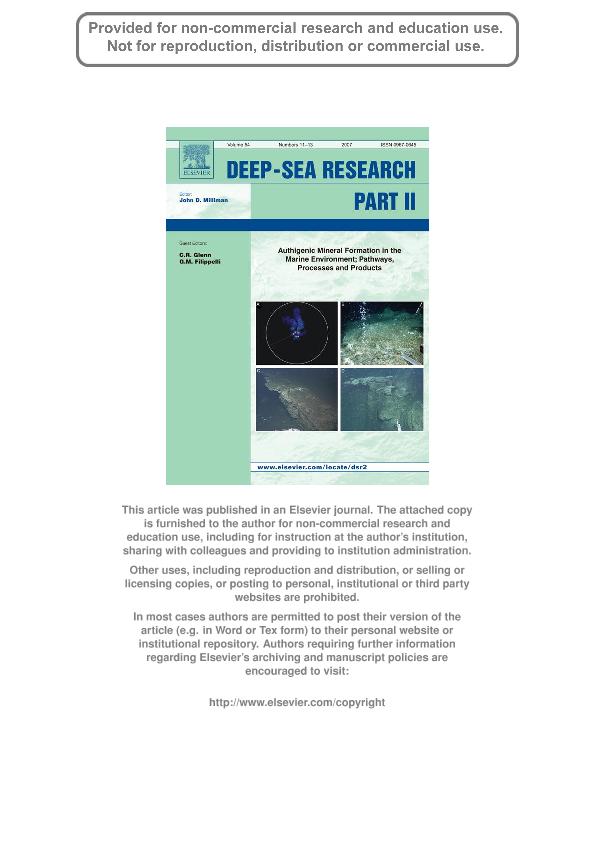Artículo
Geochemistry of rare earth elements in early-diagenetic miocene phosphatic concretions of Patagonia, Argentina: Phosphogenetic implications
Fecha de publicación:
06/2007
Editorial:
Pergamon-Elsevier Science Ltd
Revista:
Deep Sea Research Part II: Topical Studies in Oceanography
ISSN:
0967-0645
Idioma:
Inglés
Tipo de recurso:
Artículo publicado
Clasificación temática:
Resumen
Phosphatic concretions in the Early Miocene, shallow marine, clastic deposits of the Gaiman Formation (Gaiman Fm.) show typical major element ratios, rare earth element (REE) patterns, and total REE contents. These characteristics are similar within different stratigraphic levels and geographic locations of the unit in central-north Patagonia, Argentina and suggest a common process for the origin of the concretions. Major element oxides in concretions are grouped into a "clastic" group (Si, Al, Ti, K and Fe), that mostly corresponds to the silicates in the terrigenous fraction, and an "authigenic" group (P, Ca and total REEs), that corresponds to authigenic francolite and calcite. Mn is the only element that exhibits a separate behavior, most likely because of its high mobility in seawater. Major element ratios in host shales are similar to those of the clastic fraction within the concretions and coquinas. Concretions are slightly depleted in LREEs and slightly enriched in HREEs in comparison to shales and display a weak negative Ce anomaly. Their La/Yb and La/Sm ratios indicate REEs incorporation from pore water without strong postdepositional recrystallization or strong adsorption. Y anomalies and La/Nd ratios in concretions are equivalent to seawater or slightly lower, suggesting that Gaiman concretions did not undergo intense diagenesis, but they were probably formed from phosphatic solutions impoverished in Y and La as a result of REEs release to solution from organic complexes in the early diagenesis. Flat, linear REE patterns also support an early-diagenetic origin for the concretions, via quantitative precipitation of phosphate from oxic-suboxic pore waters. Water circulation through burrows at the Miocene seawater-sediment interface improved ion diffusion and pore water renewal in the sediments, allowing the development of a widened early-diagenetic oxic-suboxic zone and the precipitation of phosphate with a homogeneous REE pattern.
Archivos asociados
Licencia
Identificadores
Colecciones
Articulos(IGEBA)
Articulos de INSTITUTO DE GEOCIENCIAS BASICAS, APLICADAS Y AMBIENTALES DE BS. AS
Articulos de INSTITUTO DE GEOCIENCIAS BASICAS, APLICADAS Y AMBIENTALES DE BS. AS
Citación
Fazio, Ana Maria; Scasso, Roberto Adrian; Castro, Liliana Norma; Carey, S.; Geochemistry of rare earth elements in early-diagenetic miocene phosphatic concretions of Patagonia, Argentina: Phosphogenetic implications; Pergamon-Elsevier Science Ltd; Deep Sea Research Part II: Topical Studies in Oceanography; 54; 11-13; 6-2007; 1414-1432
Compartir
Altmétricas




